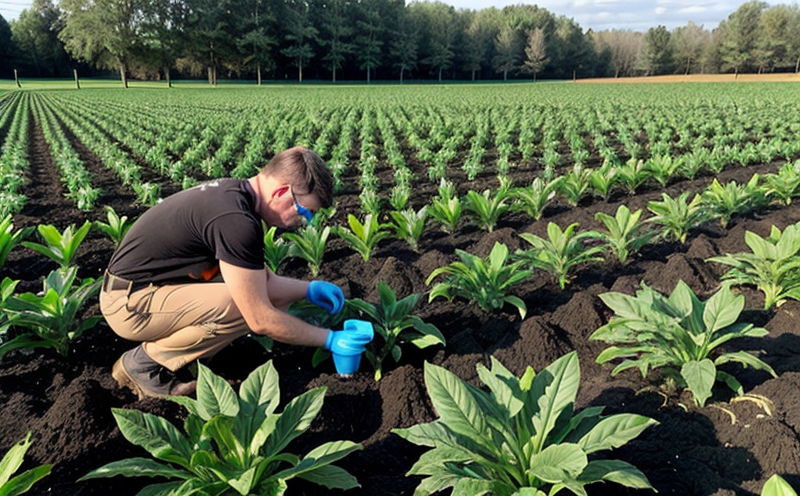Iron Content Testing in Fertilizers
The importance of iron content testing in fertilizers cannot be overstated. Iron is an essential nutrient that plays a critical role in plant growth and development, affecting photosynthesis, chlorophyll synthesis, and the regulation of various biochemical processes within plants.
Iron deficiency can lead to stunted growth, yellowing leaves (chlorosis), and reduced yields. Conversely, excessive iron can be toxic to plants, leading to wilting and death. Therefore, accurate and precise determination of iron content in fertilizers is crucial for both agricultural productivity and environmental sustainability.
The testing process involves several steps: sample preparation, digestion, analysis using appropriate techniques such as atomic absorption spectrophotometry (AAS) or inductively coupled plasma optical emission spectroscopy (ICP-OES), and interpretation of results. The accuracy of these tests directly impacts the quality of agricultural outputs.
Quality managers and compliance officers need to ensure that fertilizers meet international standards such as ISO 17266, which provides guidelines for the determination of iron in fertilizers. R&D engineers must also consider the impact of iron content on different types of crops and soil conditions. Procurement teams should verify that suppliers adhere to these stringent testing protocols.
| Sample Preparation | Analysis Techniques | Acceptance Criteria |
|---|---|---|
| Grinding, sieving, and dissolving in acid. | AAS or ICP-OES. | Iron content should be within ±10% of the declared value on the fertilizer label. |
The precision of iron content testing is paramount. Variations in soil pH, temperature, and moisture levels can affect plant uptake of iron, making accurate testing critical for optimal crop performance. Understanding these factors aids in tailoring fertilizers to specific agricultural needs, enhancing both yield and sustainability.
Applied Standards
The International Organization for Standardization (ISO) sets forth the standards that guide iron content testing in fertilizers. Specifically, ISO 17266 provides detailed procedures for the determination of iron in various types of fertilizers.
In addition to ISO standards, other relevant international bodies such as ASTM and EN also provide guidelines that can be referenced when conducting these tests. Compliance with these standards ensures consistency and accuracy across different laboratories worldwide.
These standards cover a range of aspects including sample preparation methods, digestion techniques, analytical instrumentation requirements, and calculation procedures for reporting results. Adherence to these norms helps maintain high-quality agricultural practices globally.
Scope and Methodology
- Digestion: Samples are digested using nitric acid and perchloric acid.
- Analytical Technique: Atomic Absorption Spectrophotometry (AAS) or Inductively Coupled Plasma Optical Emission Spectroscopy (ICP-OES).
- Validation: Results are validated through replicate analyses and comparison with certified reference materials.
The scope of iron content testing in fertilizers encompasses a variety of fertilizer types, including liquid solutions, granular forms, and controlled-release products. The methodology ensures that all tested samples comply with international standards and provide reliable data for decision-making processes in agriculture.
Environmental and Sustainability Contributions
- Precision testing helps prevent over-application of iron, reducing potential environmental damage from excess nutrients entering waterways.
- Accurate iron content ensures optimal plant growth without contributing to soil acidification or metal contamination issues.
- Compliance with ISO standards promotes global consistency in agricultural practices, enhancing overall sustainability efforts.
By accurately determining the iron content in fertilizers, laboratories contribute significantly to sustainable agriculture. This not only supports healthier crops but also aids in preserving natural resources and ecosystems.





